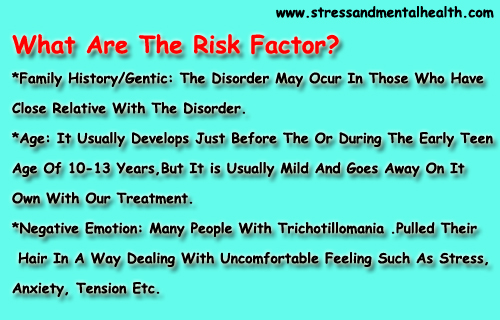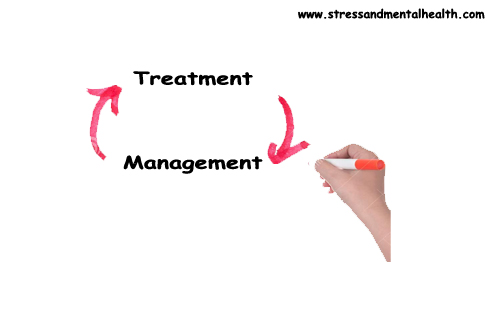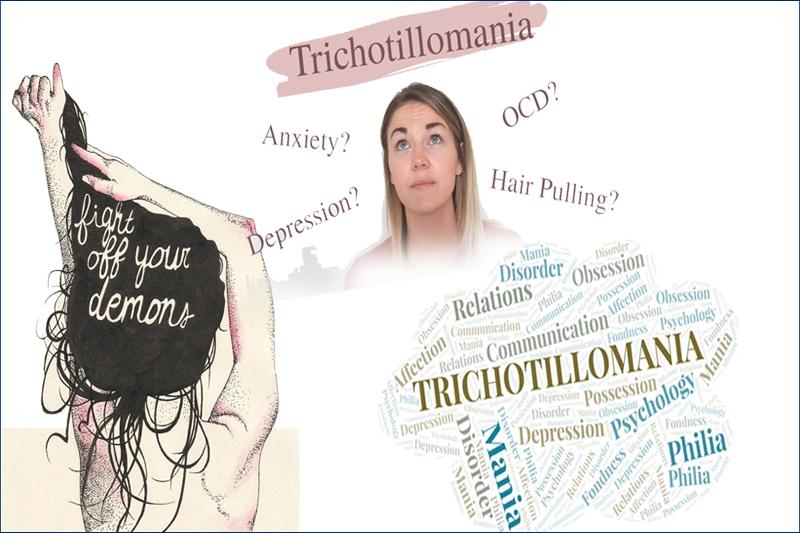“Trichotillomania or hair pulling is a disorder that involves repetitive, irresistible urges to pull out hair from eyebrow, scalp, and other parts of the body. It is an impulse control disorder. It could be due to anxiety and stress”
Trichotillomania
It is a mental disorder, It is also called a hair-pulling disorder. it involves repeated, irresistible urges to pull out hair from your scalp, eyebrows, or other parts of the body, in spite of trying to stop, often leaves patchy.
Hair pulling from the scalp leaves patchy bald spots, that cause major distress and interfere with work functioning. People suffering from this disease may suffer a vast loss of hair. Though in some people it is manageable. In some cases compulsive urge to pull hair is overpowering. Some medical management options have helped many people to reduce their hair pulling or stop completely.
Cause and symptoms of hair-pulling

The cause of Trichotillomania is not clear. However, like many other complex disorders, it results from a combination of genetic and environmental issues.
- Family history: Genetics plays a role in the development of this disease, this disorder may occur in those cases where a close relative is suffering from this disorder.
- Age: It usually develops just before or during the early teens- age of 10 to 13 years but it is usually mild and goes away on its own without treatment.
- Other disorders: People who have trichotillomania may also have other disorders such as depression, anxiety, OCD.
- Stress:– Severely stressful situations or events may develop trichotillomania in some people.
Due to stress or anxiety, chemical imbalance occur in the brain, as in obsessive-compulsive disorder. Due to chemical imbalance in the brain, sometimes patients think to do self-harm by pulling hair and feel satisfied after pulling hair. Feels pleasure or relief after the hair is pulled. The patient starts biting, chewing, or eating the pulled-out hair. In some cases play with pulled-out hair or rubbing the same across lips or face, repeatedly trying to stop pulling out hair but failed. Many people who are suffering from Trichotillomania also pick their skin, bite their nails or chew their lips. Occasionally they pull hair from pets, dolls, clothes, or from blankets and fees satisfied.
- Focused hair pulling: Some people pull their hair intentionally to relieve stress or tension cover under this group.
- Automatic hair pulling: whereas some people pull their hair without even knowing that they are doing it, even doing the same while seeing TV or reading a book.
In many cases, people may do both types of hair pulling depending on the situation and mood of the patient.
Trichotillomania can also be related to emotions
- Negative emotions: Many people with Trichotillomania, pulled their hair in a way dealing with uncomfortable feelings such as stress, anxiety, tension, etc.
- Positive emotions: Many people feel satisfaction and relief after pulling hair. They continue to pull their hair to maintain these positive feelings.
Treatment and management

Some people think that it is a bad habit and they do not take any medical treatment. Whereas some other people seek a diagnosis for a variety of reasons. However, behavior therapy, as well as medication, it may be taken under the supervision of a medical specialist.
Behavior therapy plays the most important role In the treatment of hair-pulling. Awareness training, motivation, and compliance, relaxing training are the most important factors to drive out a patient from the vicious circle of this disease.
In addition to psychotherapy, proper medication under the supervision of a specialist physician is also necessary to root out the ailment. Specialists will manage medicines as per the age and condition of the patient.
Further Platelet-rich plasma (PRP) Therapy is also useful to restore the affected area of the skin. In this therapy injections of a concentration of a patient’s own platelets accelerate the healing of injured tendons, ligaments, muscles, and joints.
In this way, PRP injections use each individual patient’s own healing system to improve musculoskeletal problems. It is a good cosmetic procedure. This therapy helps the body restore itself, and it takes a few weeks to see enough difference. In some cases, people observe changes in the first week but in most of the cases, it takes more time or so on. Increasing clinical study reveals that PRP can reverse hair loss and stimulate natural hair growth. PRP studies report following up with patients for up to six months after the procedure.
Any patient of Trichotillomania who has stopped hair pulling can avail the facility of PRP therapy and reverse hair loss and stimulate natural hair growth.
Frequently Asked Question About Trichotillomania
Q. Is trichotillomania occur due to anxiety?
Ans. It is also known as a hair-pulling disorder, which is an impulse control disorder, can occur due to stress and anxiety.
Q. What causes hair pulling?
Ans. The hair-pulling disorder occurs due to stress and anxiety, the chemical change in the brain, and changes in hormone levels during puberty in teenagers.
Q. Is Trichotillomania related to ADHD?
Ans. Hair pulling is an impulse control disorder while the ADHD patient begins hair pulling to relieve the tension which happened due to sensory issues. Thus both are biological and psychologically related.
Q. Does hair pulling ever go away?
Ans. Hair pulling is a mental health disease. It requires medical treatment. It does not go away on its own.
Q. How do you cure hair pulling?
Ans. Habit reversal training, behavior therapy, cognitive therapy. It must be performed under the supervision of a therapist.
